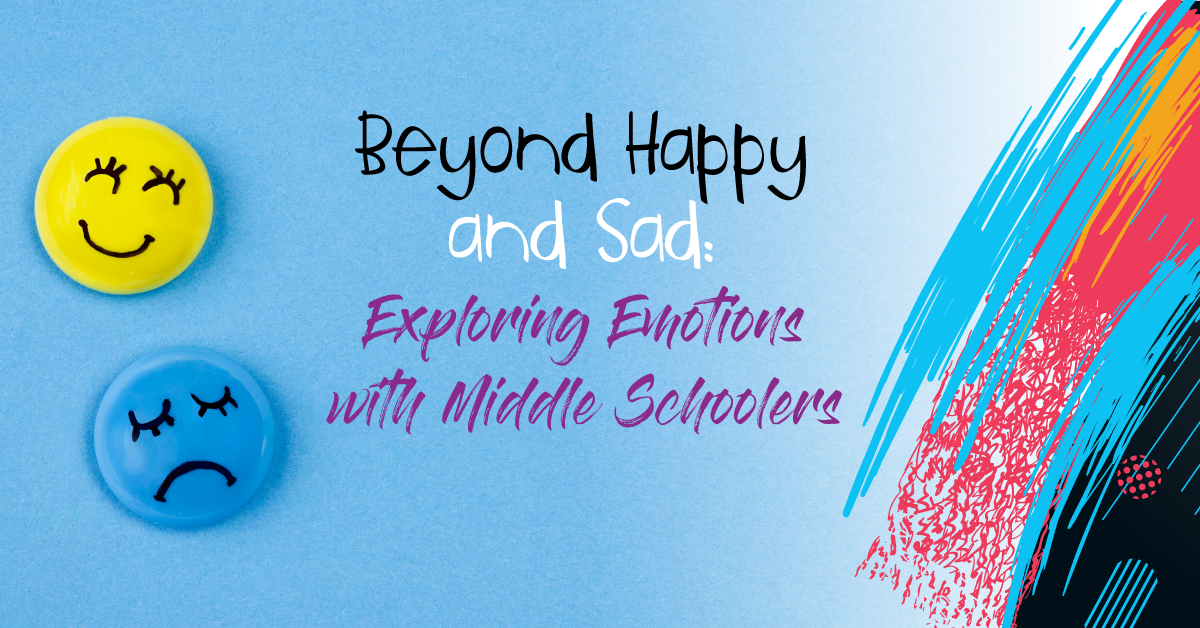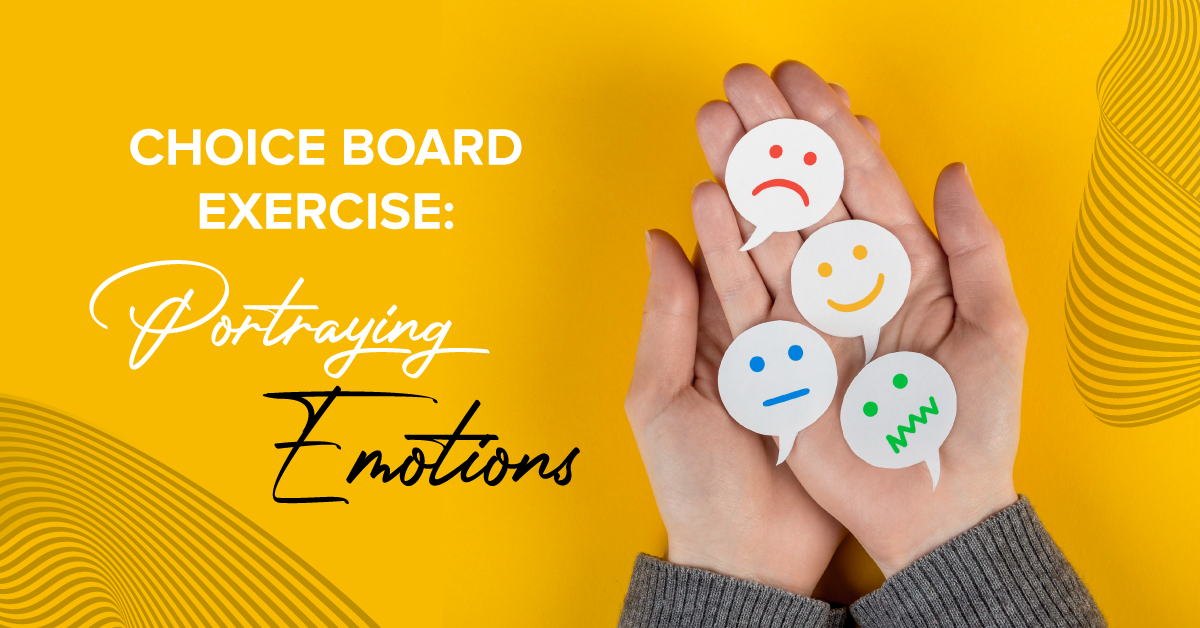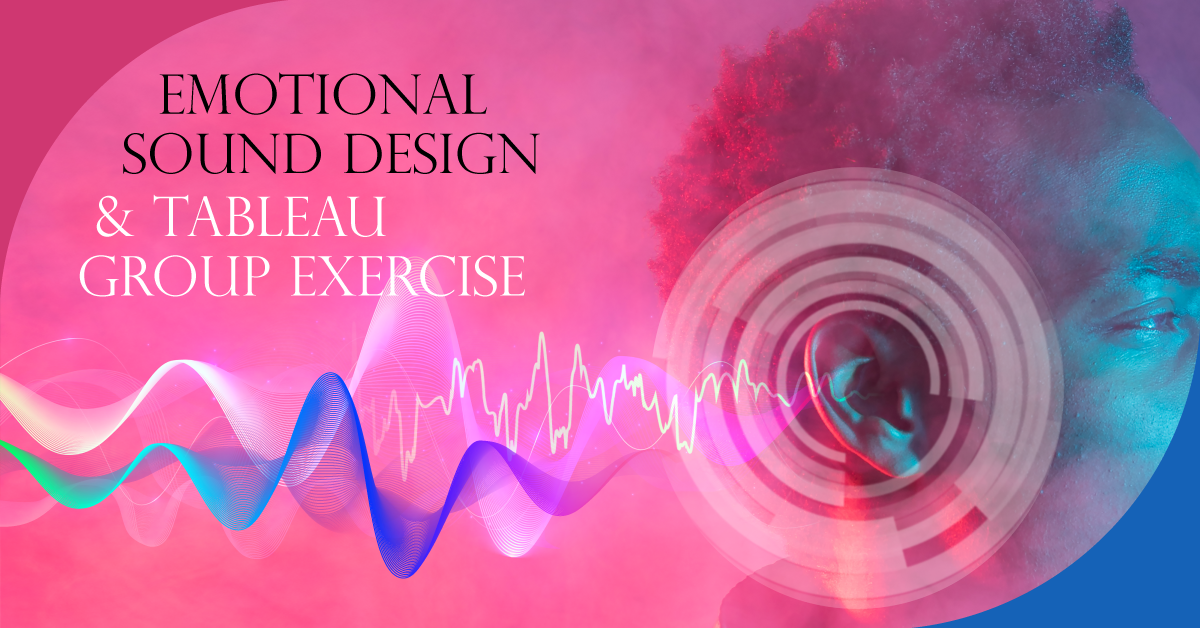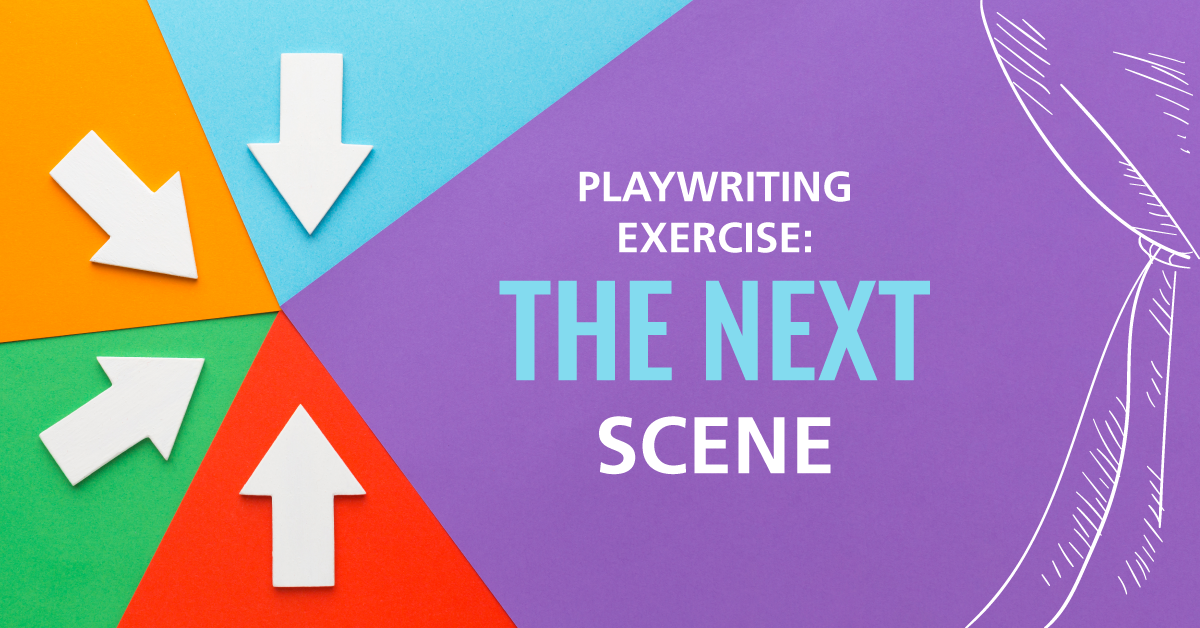Beyond Happy and Sad: Exploring Emotions with Middle Schoolers
Theatre is all about conveying emotions onstage through our voices, gestures, facial expressions, and body language. With middle schoolers, who are often in the midst of learning how to deal with their own emotions, it’s not always easy for them to know how to portray feelings onstage, or even have the language to describe how they’re feeling. Let’s help them figure it out.
Materials
You’ll need a thesaurus or the ability to do a web search for synonyms, as well as a dictionary and your blackboard/whiteboard or a large piece of paper to write on.
Instructions
1. If you’re using a large piece of paper, turn it horizontally so it’s long. On one side of the paper (or blackboard/whiteboard), write the word happy. On the other side write sad or angry. You can make two lists if you’d like to work on both sad and angry. Draw a horizontal line between the two emotions to connect them. The centre of the line represents neutral. For example:
HAPPY ------------------------ (Neutral) ------------------------ ANGRY
You could also draw a small vertical line down the middle to represent neutral.
2. Imagine that the horizontal line is a spectrum. The outer edges are the happiest and angriest you can ever be in your life. The closer to the centre (neutral), the less intense the emotions are.
3. Have students brainstorm other emotions that are similar in tone to happy and angry, then determine where they fit on the spectrum. Use a thesaurus or this page of emotion prompts if they need help. Which is a more intense happy feeling: content or glad? Excited or ecstatic? Which is a more intense angry feeling: annoyed or irritated? Furious or fuming? Where would they put each emotion on the spectrum? Aim for a minimum of five words per side.
If students don’t know what a word means, have them look up the definition and share it with the class.
4. Help your students understand what each emotion word might feel like. For each emotion, have students fill in the blanks: When (event) happens, I feel (emotion). Or I feel (emotion) when (event) happens, but I feel (different emotion) when (different event) happens. You can then use these sentences as prompts for students to practice portraying the different emotions.
For example: "I feel happy when I have my favourite breakfast. I feel thrilled when I get a birthday present. I feel overjoyed when the present is a new puppy!"
OR
“When my brother drinks the last juice box in the fridge, I feel annoyed. When he won’t share the TV, I feel angry. When he blames me for something I didn’t do, I feel furious!”
5. Have students write (using the printable worksheet below) or discuss:
- How do their bodies feel? (Tense? Tight? Hot? Cold? Jumbled up? Something else?)
- What do their faces do? (Smile? Frown? Stare? Turn red?)
- What does their voice do? (Cheer? Scream? Gasp?)
- What actions do they do? (Jump up and down? Clench their fists? Kick something? Fall to the ground? Cover their ears?)
- How do they demonstrate the different levels of emotion?
6. Have students stand up and act out the small scenes they created from the fill in the blanks in steps 4 and 5. Check out Tips to Help Students Raise the Stakes in Drama Class for help with this. You also might consider having students use the movie Inside Out as a reference. How do the Emotions stand? Move around? What do their faces do?
7. Reflection / Exit Slip Questions: “How can this exercise make you a better actor?” or “How can this exercise help you with your role in our class performance/school show?”
Additional Resources:
Choice Board Exercise: Portraying Emotions
Physicalizing Emotions: How to Make Emotional Performances Consistent and Repeatable



